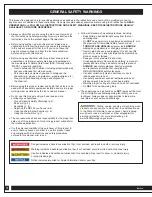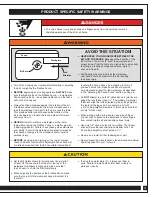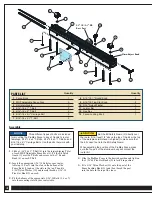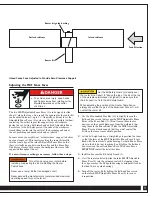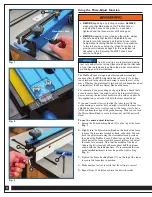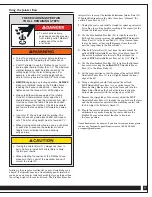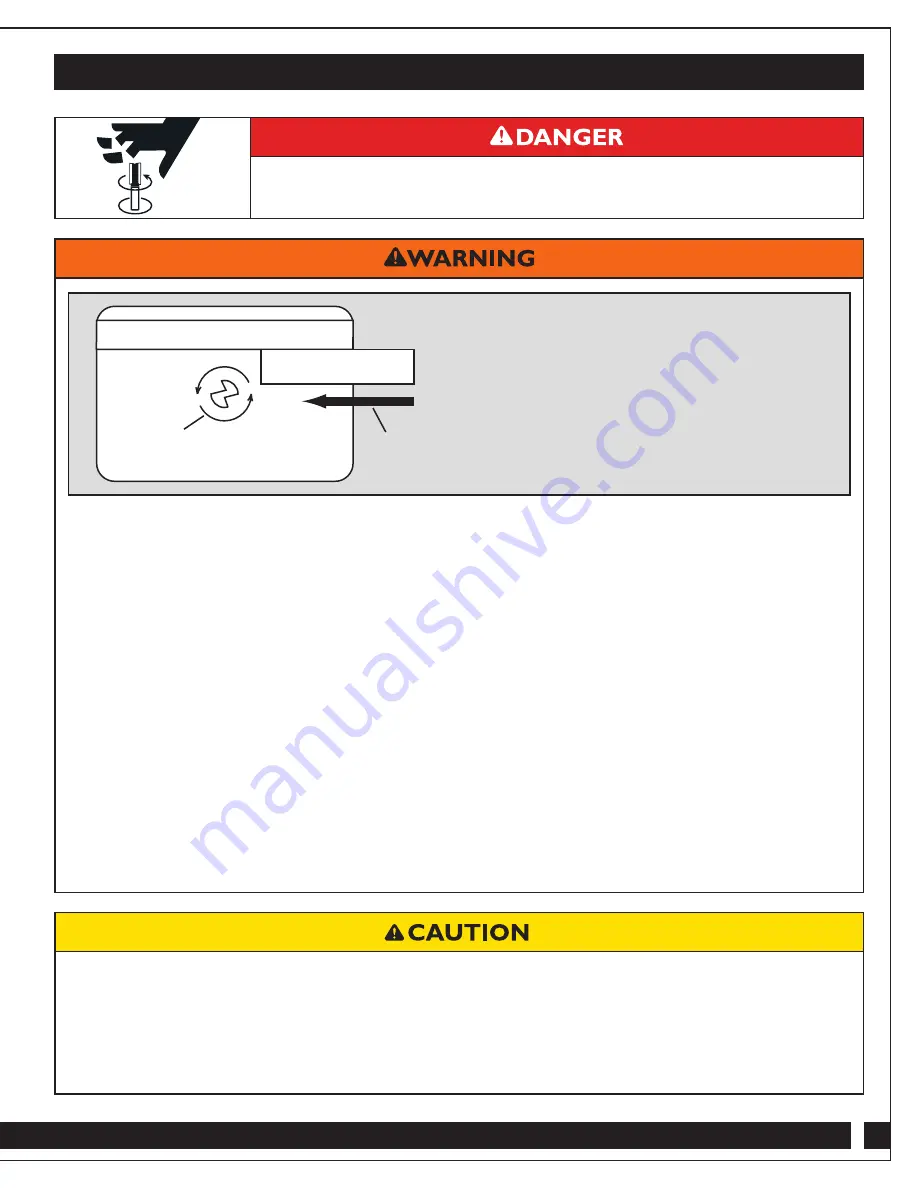
3
PRODUCT SPECIFIC SAFETY WARNINGS
>
To avoid serious injury, keep hands and fingers away from the spinning router bit.
Maintain awareness of the bit at all times.
>
Set the Bit Safety Guard (3) directly over the router bit,
at least 1/2" above the top of the bit or the top of the
workpiece (whichever is highest) to make sure that
the bit doesn’t cut into the Bit Safety Guard.
>
When adjusting the position of the ProMax Fence, make
sure that no part of the aluminum body will contact the
router bit.
>
If using the Jointer Bars (11), always use them in
pairs. Failure to install both Jointer Bars is likely to
yield poor results.
>
Turn off and unplug your router before installing or adjusting
the bit or adjusting the ProMax Fence.
>
BEFORE
beginning any routing operation,
ALWAYS
make
sure that
ALL
knobs on the ProMax Fence — including the
Fence Locking Knob —have been tightened and the fence
will not shift during use.
>
Always feed the workpiece against the rotation of the bit.
A table-mounted router spins the bit counterclockwise, so
feed the workpiece from right to left as you face the table.
This provides better control because the rotation of the
bit is backward and toward the fence instead of forward
and away from it.
>
NEVER
attempt to machine a workpiece at the router
table without using the ProMax Fence or a starter pin with
a bearing-guided bit. Failure to use these guides diminishes
your ability to control the workpiece and greatly increases
the chance of damage to the workpiece and/or serious
personal injury.
>
BEFORE
plugging in and turning on the router, always
check to be sure that the MDF Adjustable Fence Faces (2)
are fully secured and that the bit can rotate freely without
touching the Fence Faces. An exception to this is if
you have set up the infeed Fence Face to provide
zero-clearance support for the workpiece, as described
in the “Adjusting the Fence Faces” section on Page 5.
>
Do
NOT
attempt to use the ProMax Fence to joint board
edges that are thicker than 1
1
⁄
4
". The maximum material
thickness might be further limited by the cutting height of
the router bit being used. For example, a bit with
a 3/4" cutting height will be able to joint only boards that
are 3/4" thick or less.
>
When working with narrow boards, use a push block
or push stick to advance the workpiece to avoid fingers
from contacting the bit and causing serious injury.
>
Use only 1/2" shank router bits for jointing. The thicker
shank will provide less chatter and cleaner cuts. The
bit’s cutting height must not exceed 1
1
⁄
2
".
>
Never use a router bit that is damaged or dull.
>
Never exceed the manufacturer’s recommended maximum
operating speed for your router bit.
> NEVER FEED YOUR WORKPIECE BETWEEN THE
BIT AND THE FENCE.
Because of the direction of the
bit’s rotation, the bit could “grab” the workpiece and
propel it away from the table at a high velocity, potentially
resulting in property damage and serious injury to
anyone in its path.
>
Additionally, when the bit grabs the workpiece,
your hands could be drawn into the bit, resulting
in serious injury.
AVOID THIS SITUATION!
Fence
Workpiece
Bit Rotation
Feed
Direction


